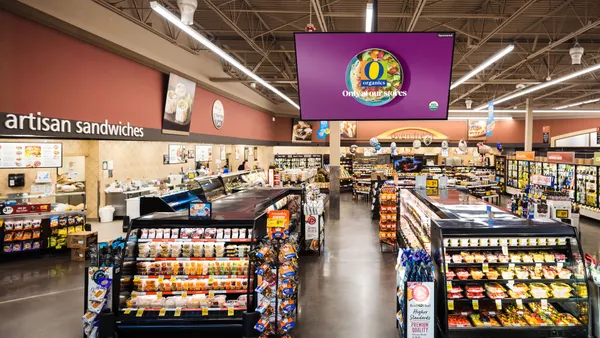At the top of the year, Instagram appeared to be gradually transforming itself from a social media app to a mobile commerce hub. The image-sharing platform ramped up its efforts in March with a new feature that lets users more easily complete and track purchases within the app, streamlining shoppers' journey from product discovery to payment and delivery. Nike, Adidas, H&M and Zara were among the 23 brands to partner for Checkout on Instagram's U.S. launch, pointing to how these companies and the Facebook-owned app are looking to drive direct sales and capitalize on Instagram's massive user base.
Checkout arrived in response to a consumer shift toward using mobile devices to discover and purchase products. More than one-third of Instagram users said they have bought something directly from an ad on the social site, per a study by video technology startup VidMob . A separate Adobe Analytics report forecasts that shopping via smartphone will generate 36% of e-commerce sales this holiday season — a 20% share lift year-over-year — pointing to why Instagram is working to make its app stickier for shoppers by delivering convenient features on their preferred platforms.
Though just nine months old, Checkout has already helped some brands post tangible results. Adidas CEO Kasper Rorsted said in a May conference call that the athleticwear brand's 40% year-over-year jump in Q1 online sales is largely attributed to Instagram's direct-selling features.
"People love to shop on Instagram because it's inspirational, visual-first and personalized to their passions," a Facebook spokesperson told Mobile Marketer. "We also see businesses learning from the way people use Instagram. From sharing behind-the-scenes videos to using polling stickers on Stories or using product tags on posts, we want to help businesses connect with consumers in a natural way."
Laying the groundwork
Checkout appears to have set the stage for several new shopping-related features within the app. Since March, Instagram has let some brands — MAC, Nars, Warby Parker and Ray-Ban — sell products through augmented reality (AR) try-ons, and tequila label Patron began accepting delivery orders via ads within Stories in October. These new tools demonstrate how Instagram is looking to monetize its platform by opening itself to marketers and drive repeat visits from younger consumers like Gen Zers and millennials, who favor the platform's visually oriented experience and vast presence of influencers.
"Over time, Instagram has shifted from just a place of inspiration and discovery to a space where business gets done — and where consumers can take action on inspiration," the Facebook spokesperson said.
Checkout could become a powerful revenue driver for Instagram, which has quickly become a key part of Facebook's growth strategy. Though still relatively new, the feature marks a significant push by the social media giant to compete more directly with e-commerce behemoth Amazon, which is chipping away an increasingly larger share of the digital advertising space dominated by Facebook and Google. Six months after Checkout debuted, Amazon announced it was testing personalized online storefronts for social media influencers, likely to deepen its relationship with creators that have historically flocked to Instagram.
Amazon is also reportedly developing a tool to let influencers share content from Instagram and other feeds to their curated storefront pages. Though it's unclear how much Checkout's success played a role in Amazon's recent initiative, other platforms appear to be following Instagram's lead around adding new features to elevate social commerce. In September, the core Facebook app began testing in-app checkout features embedded into dynamic ads within the news feed. By supporting direct sales, Facebook aims to capitalize on the growing trend of social commerce and reduce the estimated $213 billion lost to friction during online checkouts.
While sales through social media still make up a relatively small sliver of e-commerce, Smartly.io predicts the trend will climb as platforms continuously add features like Checkout and consumers grow comfortable purchasing products on emerging shopping channels.


 Read more
Read more








